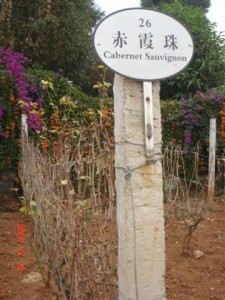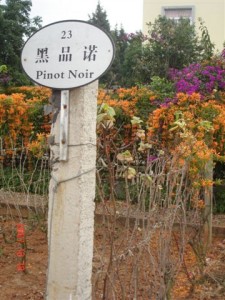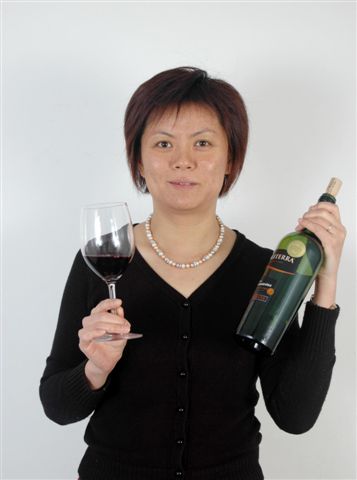By Ma Huiqin
When I was asked for an English-Chinese list of wine grape varieties for this blog, I considered the best way to provide this information. Should I include ‘霞多丽’, ‘莎当妮’, or ‘å¤å¤šå†…’, since all three have been used as a translation of Chardonnay? Similarly, should I include ‘美乒, ‘梅鹿辄’, or even ‘梅尔诺’ as a translation of Merlot?
Wine is not a part of daily life in China, so it is hardly surprising that most people are unaware of grape variety names. Even students majoring in English or French are unlikely to study them.
And while there is a standard translation of grape varieties, few people know about it in China beyond viticulturist and enologist societies. This is understandable, since before 1990, the translation of grape names did not constitute a major issue – the wine industry was quite small and homogenuous, competition was not so fierce, and few representative of foreign wines were in the market.
Translation has since become a much bigger business, with an increasing number of imported wines and with new wine distribution companies and agents emerging almost daily.
Unfortunately, many translations used in the market were done by university students who majored in English or by companies with no background in wine. When they came across a grape variety they did not know, they usually grabbed any Chinese characters that “sounded right” and published these as the translation, without checking professional wine books or the standard translation dictionary.
The problem is that careless translations based simply on sound go against the nature of the Chinese language. Unlike English, which uses an alphabet, Chinese is constructed of ideograms or characters. A Chinese word is usually made of two (and sometimes more) such characters, and the meanings of each is combined to create a new word.
From this point of view ‘霞多丽’ (rosy cloud / many / beautiful) is the best translation for Chardonnay, whereas the alternatives ‘莎当妮’ or ‘ å¤å¤šå†…’ mean nothing because the characters offer no synergy.
Getting consensus on these terms will be a difficult task, especially since individual companies have spent many years and much money promoting their brands. Thus, we can expect to find Huangdong (‘莎当妮’), Dragon Seal (‘å¤å¤šå†…’), and Great Wall (‘霞多丽’) to continue to provide consumers many ways of saying the same thing – Chardonnay.
Here are some standard definitions from the Chinese Society of Viticulturists:
Red
Barbera å·´è´æ‹‰
Carménère 佳美娜
Carbernet Franc å“丽ç
Cabernet Sauvignon 赤霞ç
Cinsaut 神索
Malbec 玛尔è´å…‹
Merlot 美ä¹
Nebbiolo 内比奥罗
Petit Verdot å°å‘³å„¿å¤š
Pinot Noir 黑比诺
Sangiovese 桑娇维塞
Shiraz / Syrah 西拉
Tempranillo å ‚æ¯”å°¼ç½—
Zinfandel 增芳德
White
Aligoté 阿利æŒç‰¹
Arneis 阿尼斯
Chardonnay 霞多丽
Chenin Blanc 白诗å—
Colombard 鸽笼白
Gewürztraminer ç¼ç‘¶æµ†
Petit Manseng å°èŠ’森
Müller-Thurgau 米勒.å尔高
Muscat of Alexandria 亚历山大玫瑰
Pinot Gris ç°æ¯”诺
Riesling é›·å¸ä»¤
Roussanne 胡桑
Sauvignon Blanc 长相æ€
Sémillon 赛美蓉
Silvaner / Sylvaner 西万尼
Viognier 维欧妮


Grape Wall has no sponsors of advertisers: if you find the content and projects like World Marselan Day worthwhile, please help cover the costs via PayPal, WeChat or Alipay.
Sign up for the free Grape Wall newsletter here. Follow Grape Wall on LinkedIn, Instagram, Facebook and Twitter. And contact Grape Wall via grapewallofchina (at) gmail.com.


Where is the best place to find a list of standard accepted wine terms and vocabulary translated into mandarin. Thanks, Rob
There are a couple more grapes missing from the list. They are Grenache and Mourvedre. Is it possible to include these? Cheers!